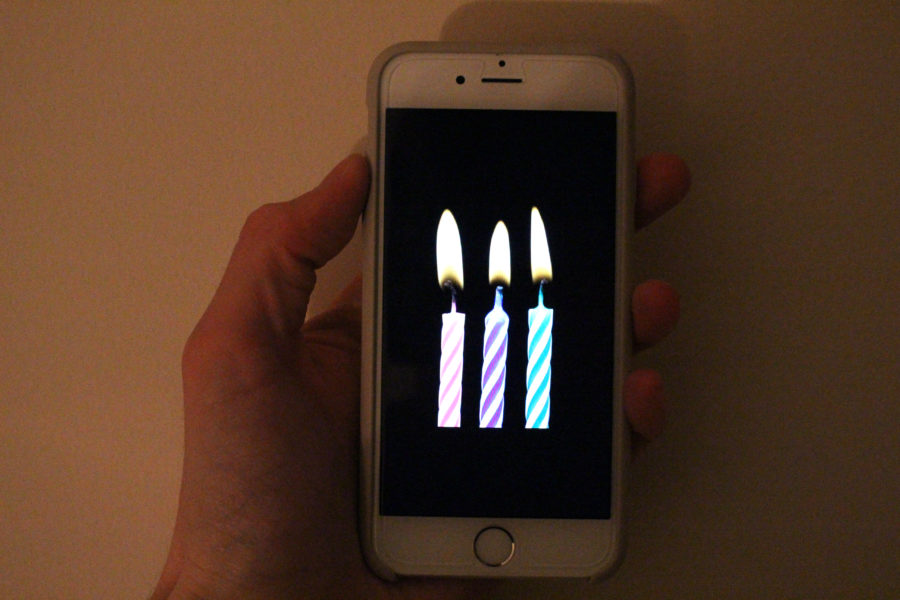On Monday, Jan. 6, 2017, the tech world celebrated the tenth anniversary of the first generation iPhone announcement by Steve Jobs at the Macworld conference. The iPhone emerged in a world controlled by Nokias and Blackberrys.
Over a dozen models and 7 generations later, I wanted to compare 7 things that have changed and other that have stayed the same about the world’s leading smartphone.
1. Announcement and release timing
The first iPhone was announced in January 2007, but it did not hit the market until that June. Apple now invites journalists and developers to its event around September or early October each year to reveal the newest era of the iPhone. Apple, as told by their fourth quarter stock prices, frequently benefits from the announcement as they head into the holiday season and people are more inclined to want a phone upgrade.
2. The ‘S’ Appendage
The iPhone 3S was the first generation to feature the ‘S’ appendage. It was the predecessor to the iPhone 3G, but the letter change stood for “speed.” And every increase in number has been followed up with an S-version of the smartphone. It typically comes in the same size, but acts as a side dish in between big hardware and innovations every other year. If there was no S-version of the phones, models would be well into the double digits, especially when the 5C and 5SE models were debuted.
3. Startup times
The classic black-and-white screen that begins the phone’s countless thinking processes can be a hassle to wait for especially if the phone unexpectedly turns off. Each year tech YouTuber EverythingApplePro lays out every iPhone that has hit the market and compares their bootup performance. As you’d expect, the new generations bring greater bootup efficiency, making us less frustrated as we wait for the logo to disappear.
4. Evolution of the touch screen
The iPhone was an outlier in the emerging 3G smartphone world dominated by competitors at the time like Blackberrys, Treos and Nokias. Apple boldly believed in all touch screen capabilities including no physical keyboard. They pioneered a highly advanced screen that allowed multi-finger touch to zoom, scroll and rotate. In 2015, they brought a third dimension to the device’s feedback with 3D Touch on the iPhone 6s. With a little extra force behind a tap on the screen, new shortcuts for efficiency and enhanced interaction with links and pictures.
5 and 6. Weight and size
The first iPhone weighed nearly a quarter of a pound in its roughly 2.5 x 4.5 inch case. The screen was only 3.5 inches. Keep in mind that there was no front-facing camera for selfies, only 8 GB of storage, and was only available with AT&T. Today, the largest iPhone available is the iPhone 7 Plus, coming in at about 3 x 6.5 inches, weighing 6 grams with a 5.5 inch screen. The largest storage available is 32 times that of the original, at 256 GB.
7. Juicing up
Charging many of Apple’s early devices, like the iPod Classic and first iPhone, required their 30 pin adapter which could only be plugged in one direction and was easily defunct by wear and tear. 2012 brought the Lightning adapter to the iPod nano, iPod touch and the iPhone 5. Apple bragged about the new adapter not needing to be plugged in any specific side and its advanced functionality. Besides charging or using an adapter for auxiliary in cars (already available through the 30 pin charger), the other uses for Lightning laid dormant for nearly five years until the device was stripped of its 3.5 mm headphone jack for a Lighting-to-earbud adapter instead.
—
Over the past decade, many tech critics and “unboxing” YouTubers have been on the rise as the free video platform took off as well. These online experts who are heard by millions of people create a lot of hype around the newest Apple gadget about to hit the market. Apple has used those followings to their advantage as channels like TechnoBuffalo, Marques Brownlee and EverythingApplePro get their hands on devices right after their announcement and give their trusted review and report on all the leaked specifications well before a consumer can get to their carrier to buy one. Apple entered and now leads a market that has a strong following by both computer engineers and average consumers alike.
Adam Lockett can be reached at [email protected].


























































































